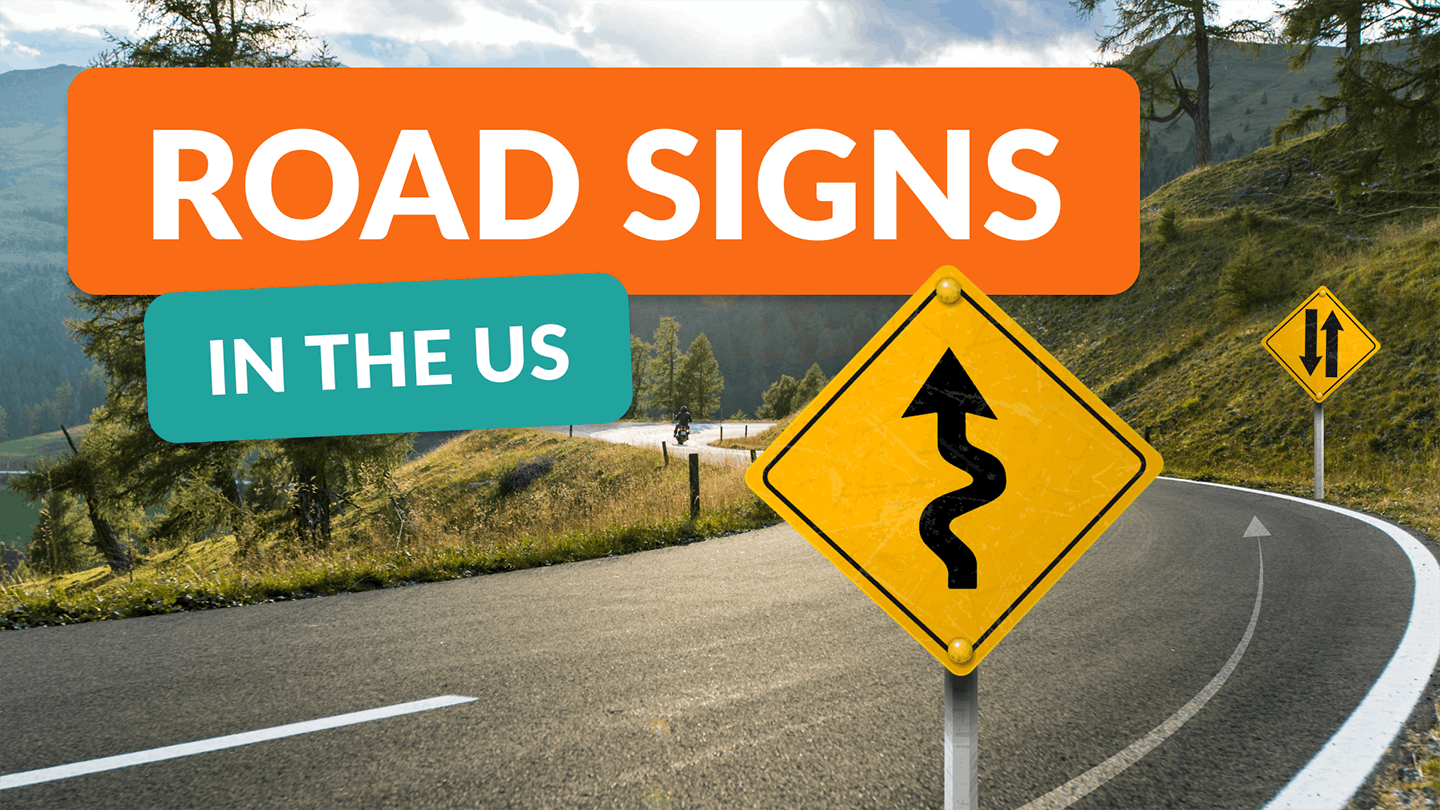
Road Signs & Traffic Signs in the US: The Definitive Guide
Road signs direct the flow of traffic and inform drivers about upcoming conditions or regulations. This definitive guide offers precise and well-structured information about traffic signs in the US, along with essential examples.
The article covers:
- Colors and shapes of traffic signs
- Main types of traffic signs
Road Sign Colors
In the US driving landscape, road sign colors act as immediate communicators. Each color corresponds to clear, standardized messages about road situations.
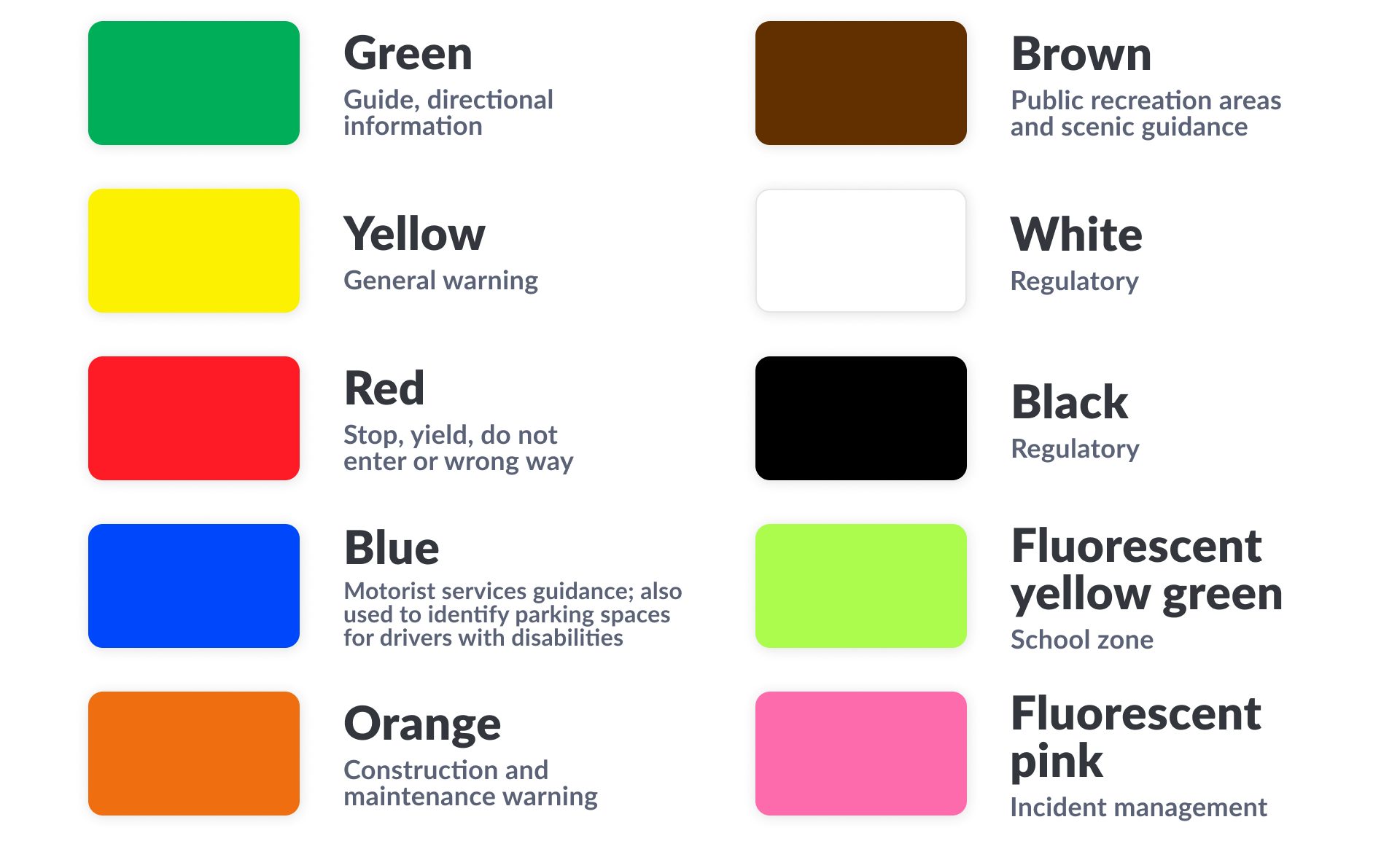
Green
Green road signs primarily indicate directions. They provide guidance to destinations, mileage distances, and interstate or highway route numbers.
Yellow
Yellow signs serve as general warnings, alerting drivers to potential hazards ahead, such as upcoming curves, intersections, or changes in the roadway. Their distinct color catches the eye, signaling drivers to proceed with caution.
Red
Red unequivocally means “stop” or signals a prohibition. Stop signs, yield signs, and signs indicating restrictions, such as “No Entry” or “Do Not Enter,” utilize red to convey urgency and importance.
Blue
Blue signs denote traveler services and information. They guide drivers to amenities like gas stations, restaurants, rest areas, and hospitals. Additionally, blue is the color for disability parking signs, ensuring visible marks for accessible parking spaces.
Orange
Orange signs indicate construction zones and maintenance activities. They inform about roadwork, lane closures, detours, or other temporary changes in traffic patterns, reminding drivers to be careful.
Brown
Brown signs point to recreational and cultural areas. National parks, historic sites, campgrounds, and other points of interest rely on brown color to guide visitors to their destinations.
White
White signs communicate regulatory information. White backgrounds present speed limits, parking rules, and other essential driving instructions, providing clear guidance on road regulations.
Black
Black typically serves as a background color that contrasts with white text for better visibility. It’s common on certain regulatory signs, such as one-way street indicators and specific parking signs.
Fluorescent yellow
Fluorescent yellow is highly visible in both daylight and twilight. It’s primarily used for school zones, pedestrian crossings, and other areas where a driver must be highly attentive.
Fluorescent Pink
Fluorescent pink signs are relatively new and denote emergency traffic incidents. They’re used around accident sites, natural disasters, or other unplanned events, guiding drivers safely around or through the affected area.
Traffic Sign Shapes
Every traffic sign shape is designed with precision and purpose. These shapes are essential symbols, indicating specific warnings, regulations, or directions.
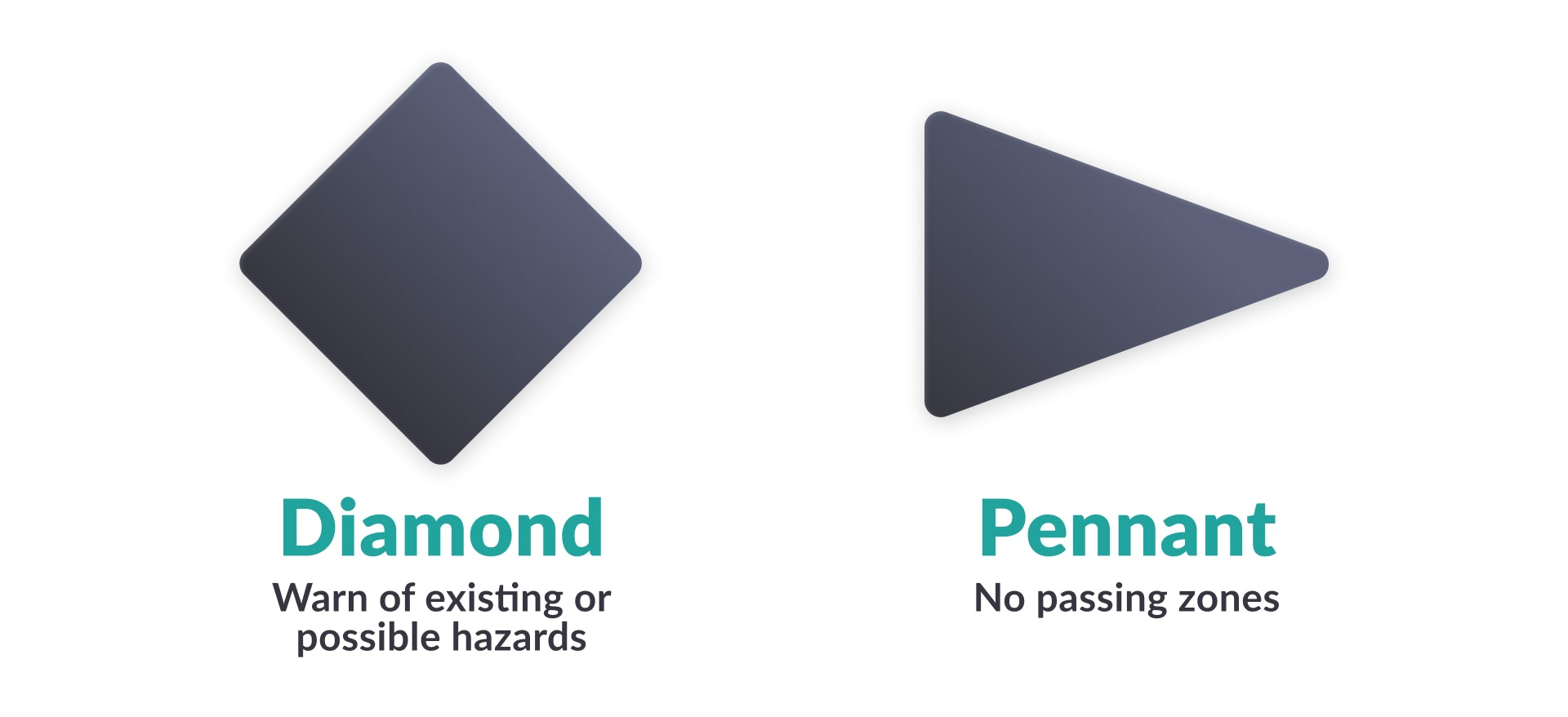
Diamond – Warning
The diamond shape primarily signals warning signs on roads. They alert drivers to special conditions or hazards ahead, such as curves, pedestrian crossings, or wildlife areas.
Pennant – No Passing Zone
Pennant-shaped signs, always found on the left side of two-way roads, exclusively warn of no-passing zones. Drivers quickly identify the no-passing rule because of the specific shape.
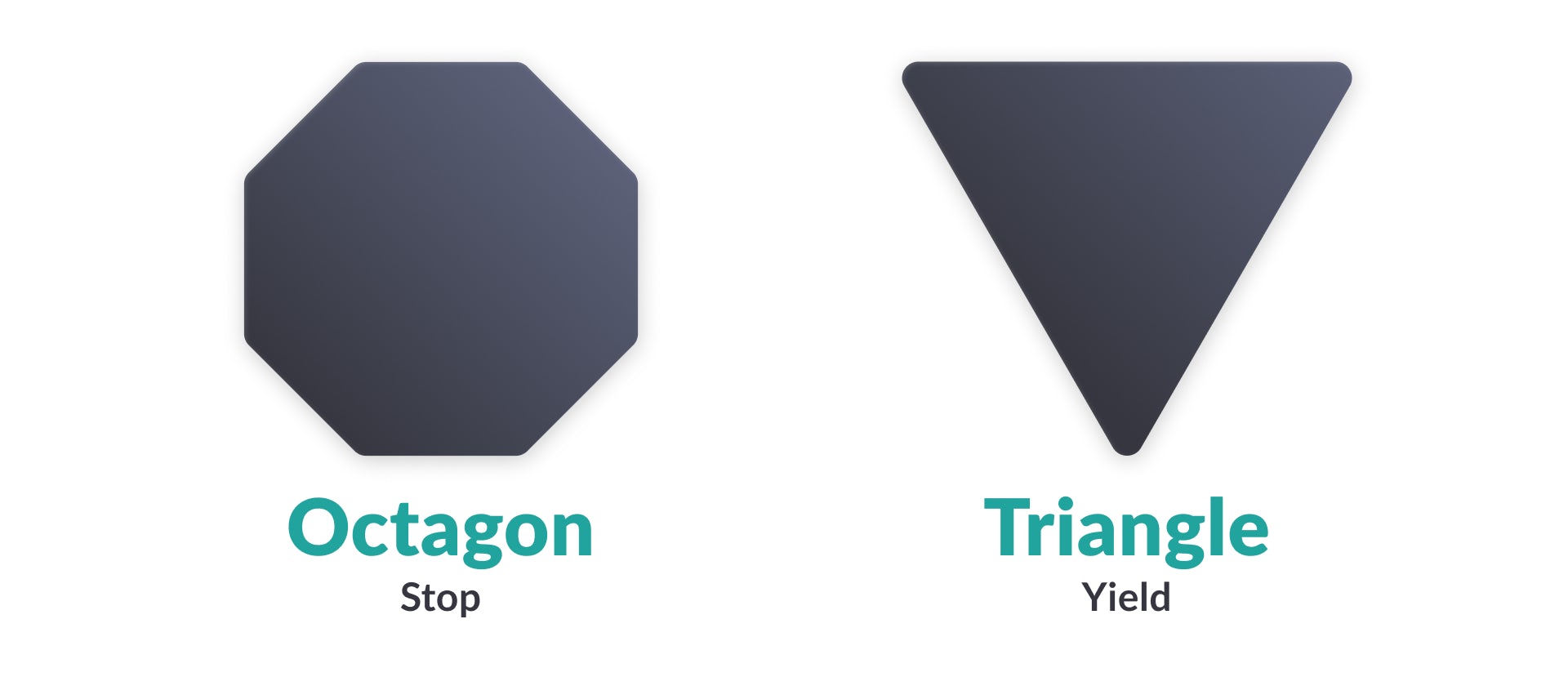
Octagon – Stop
An octagon, with its eight sides, exclusively denotes the STOP sign. The distinct design quickly alerts drivers and commands to pause.
Equilateral Triangle – Yield
Equilateral triangle signs, pointing downwards, represent yield signs. Drivers should slow or stop and let other vehicles or pedestrians go first.

Pentagon – School or County Marking
The pentagon shape signals school zones and crossings, or country route markers in the US. Drivers must slow down and be alert for children and local destinations.
Vertical Rectangle or Square – Regulatory
Vertical rectangles or squares often present regulatory information. They present clear guidelines on how drivers should proceed. Examples include speed limit signs and lane usage indications.
Horizontal Rectangle or Square – Guide
Horizontal rectangles or squares deliver guidance or direction, such as route markers, street names, or mile markers, helping in navigation on roads and highways.
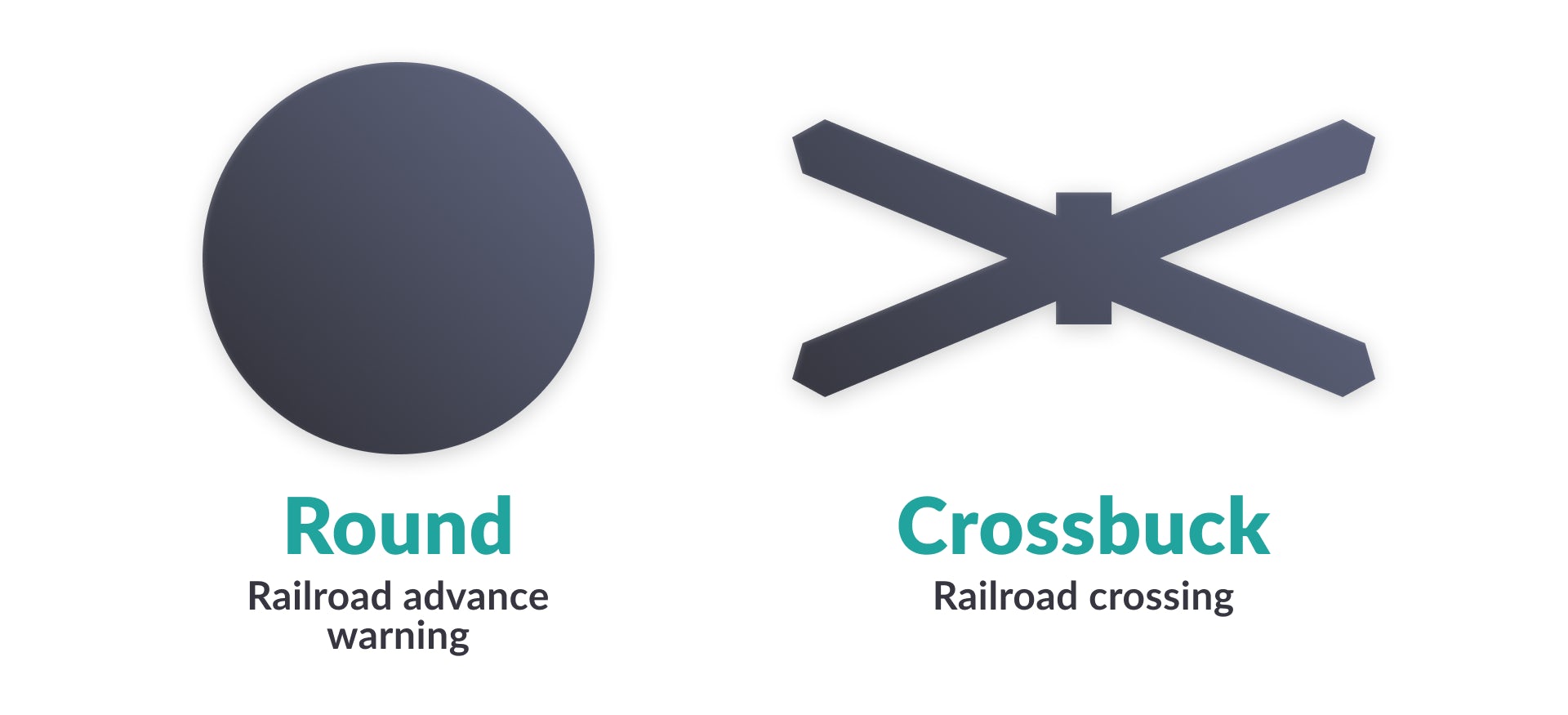
Round Signs – Railroad Crossing Ahead
Round signs in the U.S. warn of railroad crossings ahead. The circle shape warns drivers effectively about upcoming train crossings.
Crossbuck – Railroad Crossing
Crossbucks mark railroad crossings. As a train might be nearby, caution is essential for drivers.
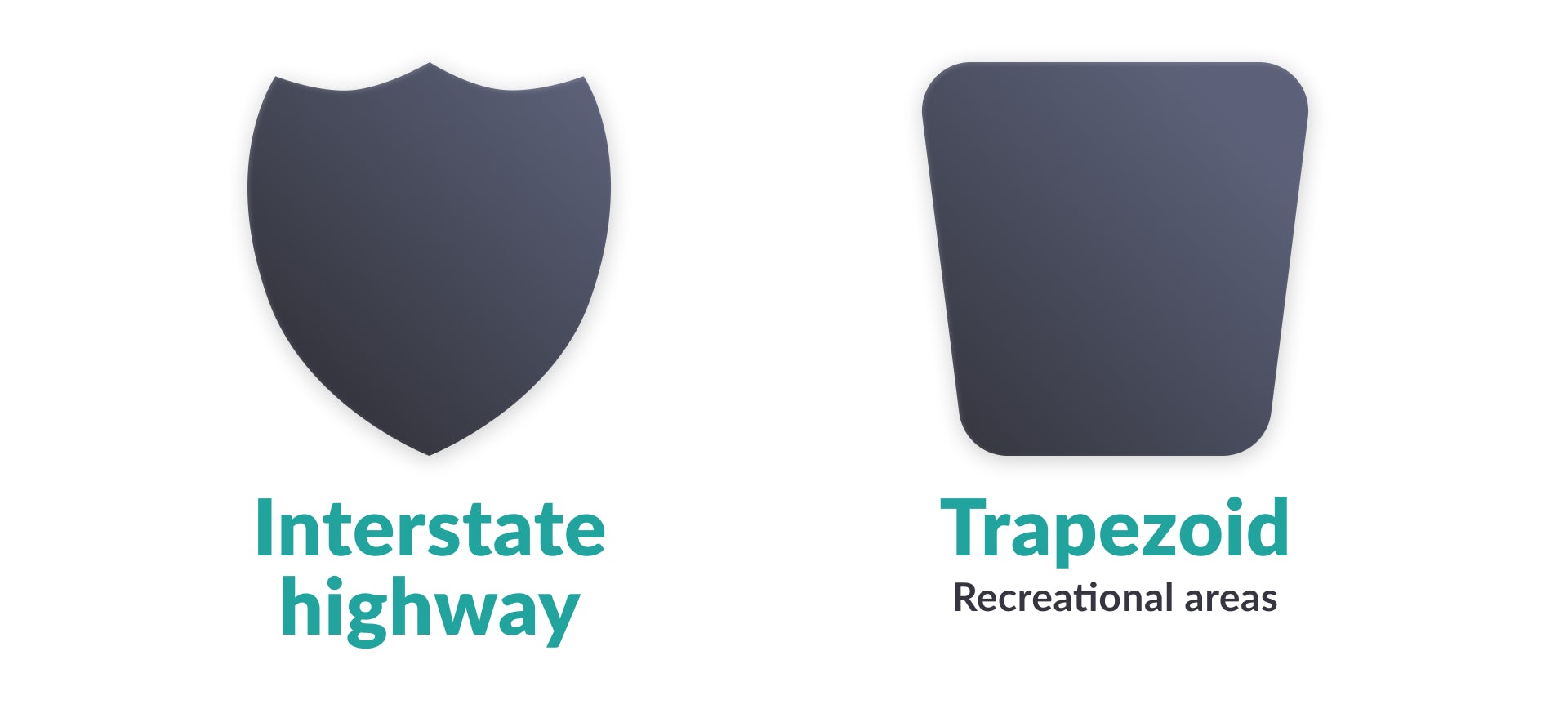
Interstate Highway
The distinctive shield shape represents Interstate Highway signs. These signs display the specific number of the interstate, ensuring drivers recognize and follow major national routes for long-distance travel.
Trapezoid – Recreational Areas
Trapezoid signs, while less frequent in the US traffic signage landscape, signal routes to recreational areas or national forests and parks. Found mainly in select states, their distinct shape helps drivers identify access points to nature reserves and camping sites.
3 Main Types of Traffic Signs
1. Regulatory Signs
On US roads, regulatory signs are responsible for driving rules. Using straightforward symbols and text, they guide on allowed actions and restrictions, from speed to turns, ensuring traffic moves safely and predictably.
Mandatory Signs
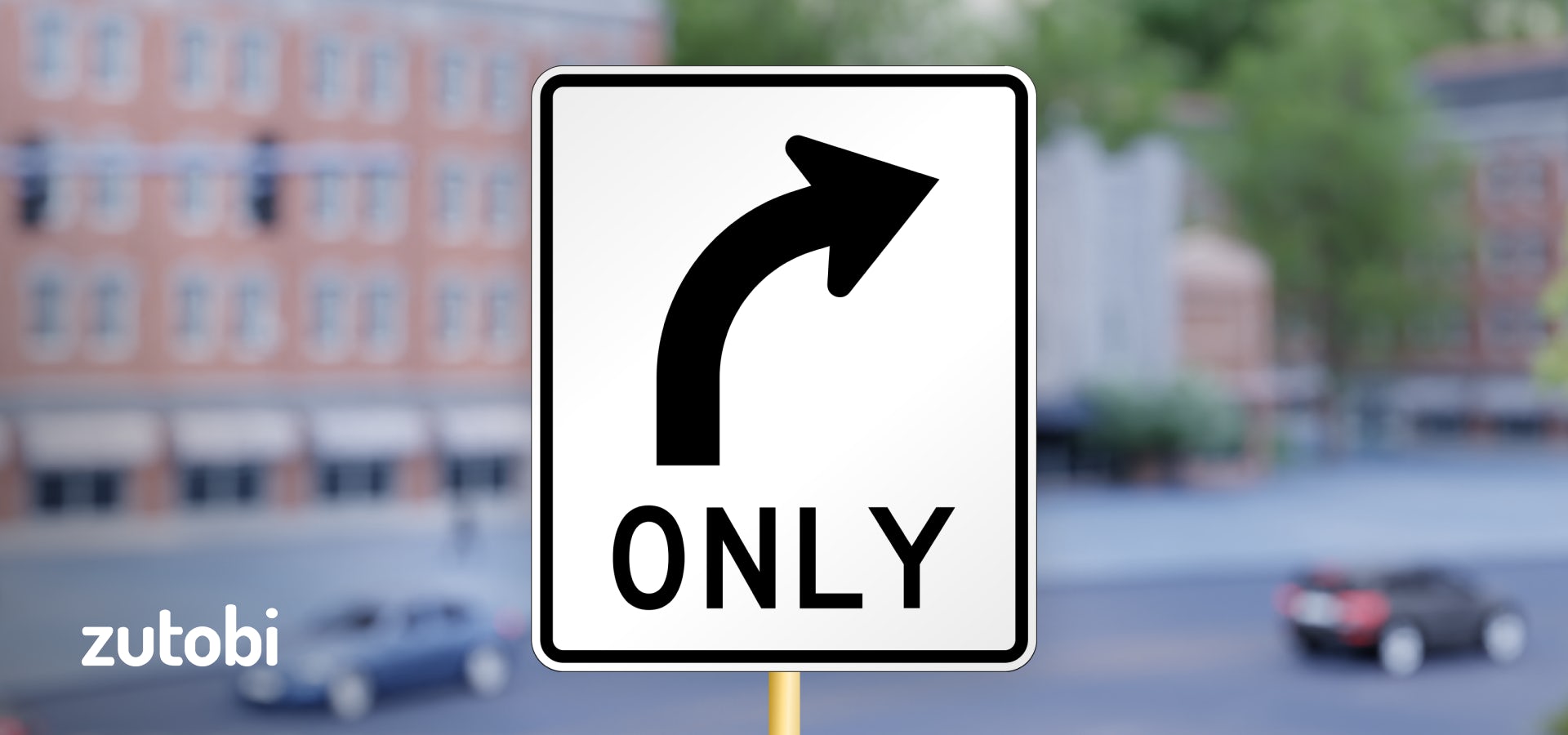
Mandatory signs dictate specific actions drivers must take, using the contrast of white backgrounds with black symbols or lettering. They remind drivers to follow the rules, such as speed limits, wearing seat belts, or yielding to pedestrians.
Prohibitory Signs
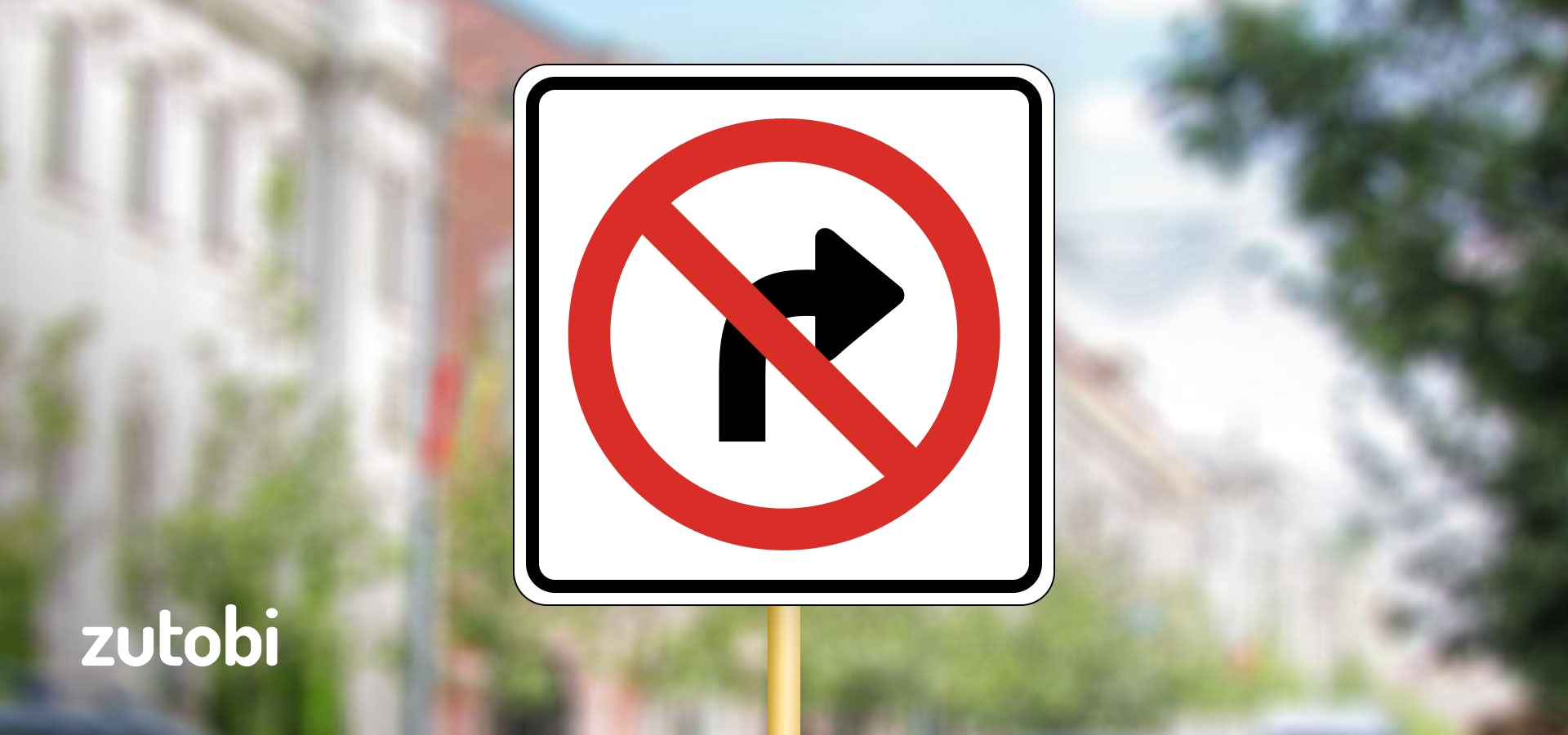
Prohibitory signs indicate actions drivers are not allowed to undertake. They often feature a bright red circle or slash combined with black symbols on a white background. From “No U-turn” to “No Parking,” these signs keep roads in order, allowing drivers to identify and follow them quickly.
Warning Signs
Warning signs mark upcoming conditions that require additional caution or a change in driving behavior. By providing information in advance, warning signs ensure smooth traffic flow and encourage responsible driving habits.
Road Hazard Signs
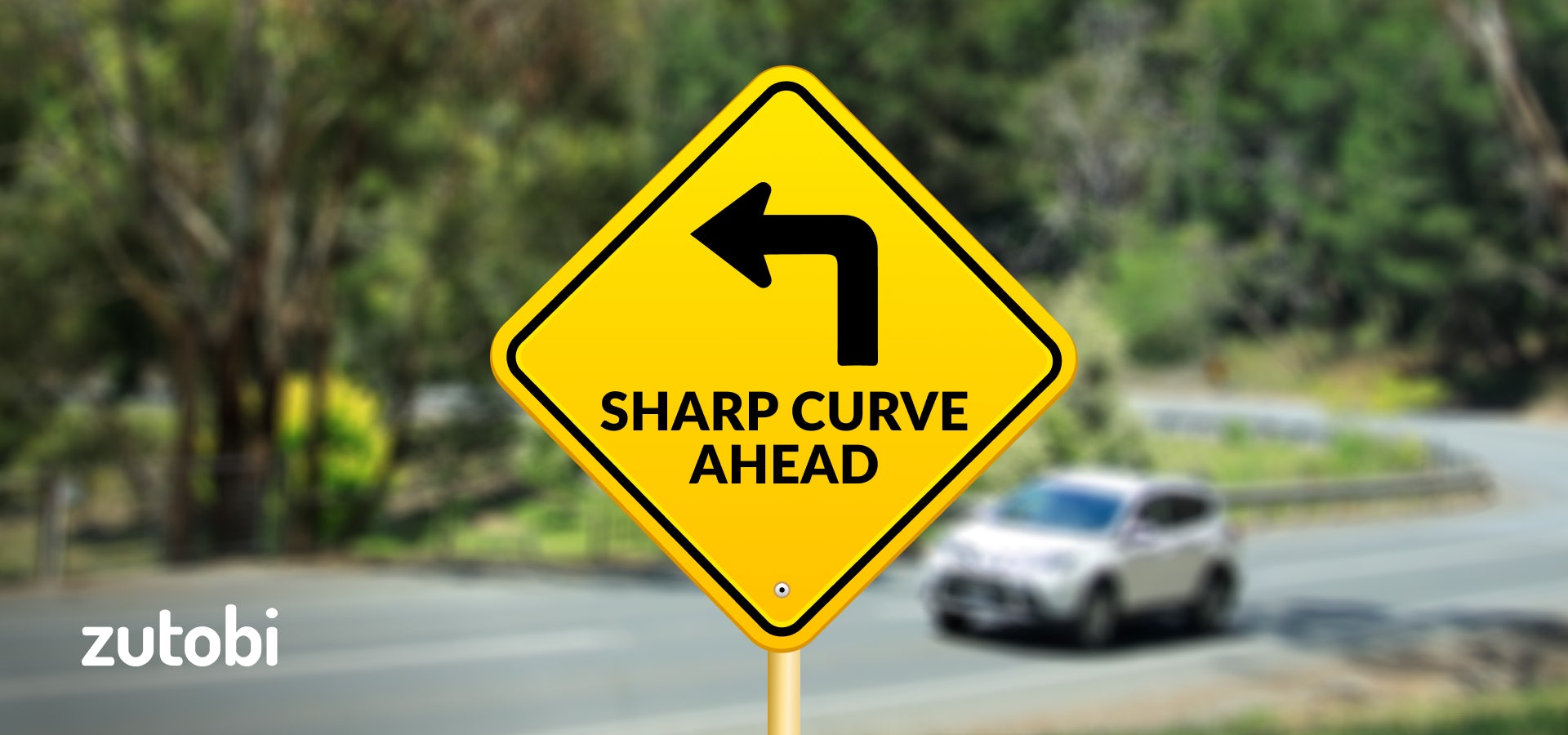
Distinguished by their yellow or orange backgrounds, road hazard signs indicate potential dangers or changes in road conditions. They promote road safety by warning drivers about obstacles, including sharp curves, slippery roads, animal crossings, etc.
Road Work Signs
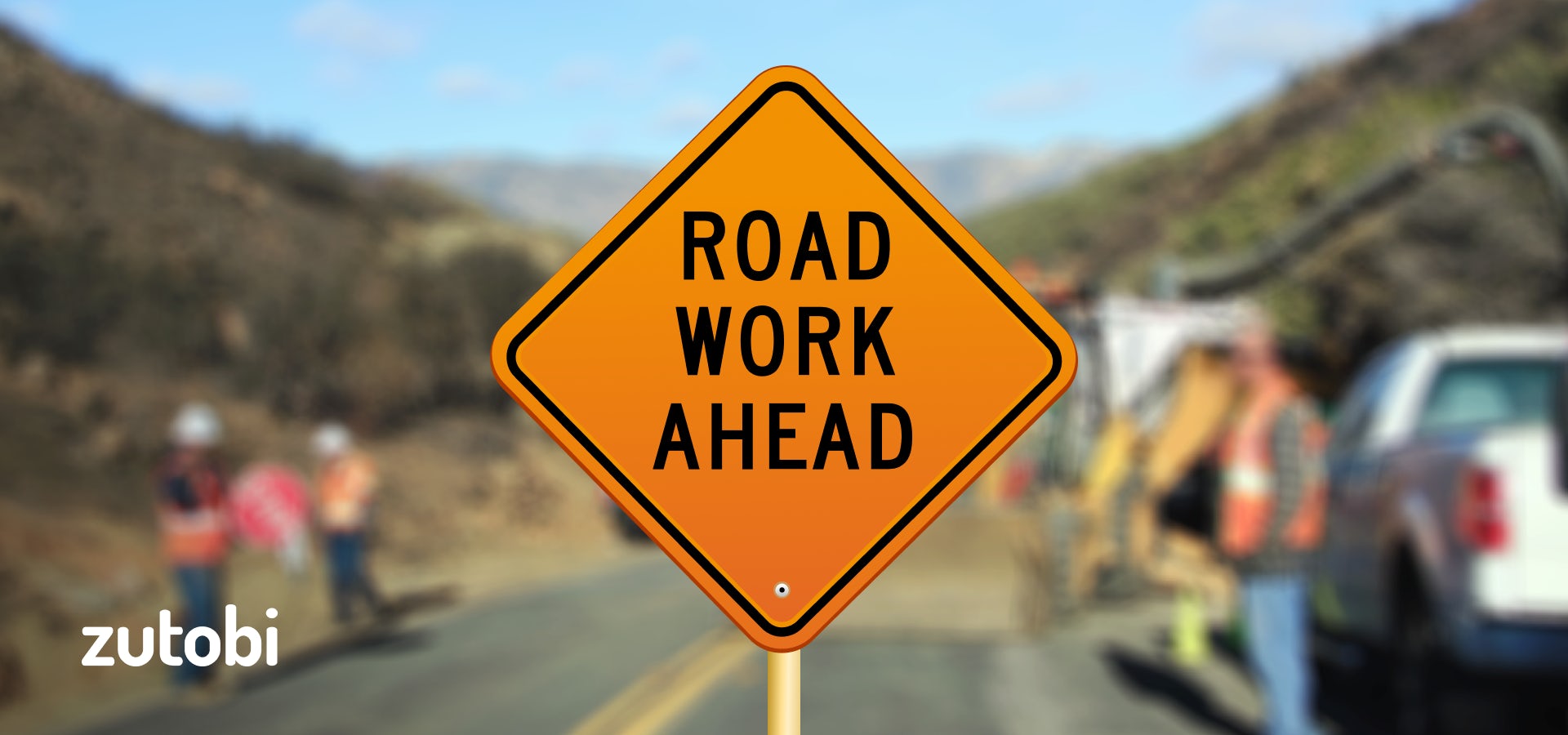
Typically orange with bold black lettering, road work signs offer a detailed breakdown of upcoming constructions. They don’t just indicate construction; they provide insights into its nature and duration, such as temporary lane shifts, expected time frames for work completion, or areas with loose gravel.
School Zone Signs
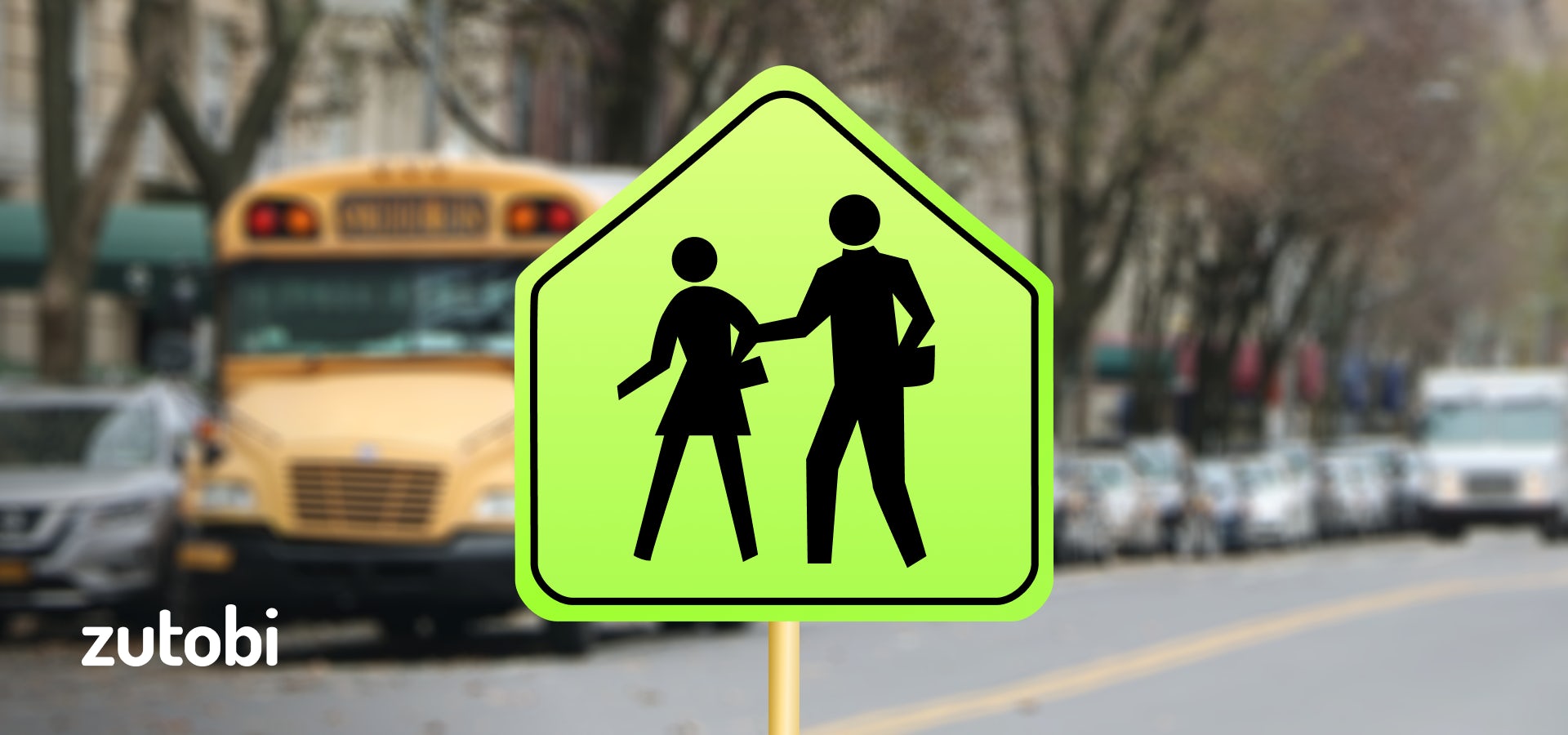
Recognizable by their fluorescent yellow-green backgrounds, school zone signs denote school proximity, specify speed limits during school hours, delineate student drop-off zones, or highlight areas with bus stops.
3. Guide Signs
Guide signs point out directions and destinations, highlighting interstate exits, showcasing nearby attractions, or signposting city limits. Their primary role is to assist drivers in making every journey efficient and hassle-free.
Navigation Signs
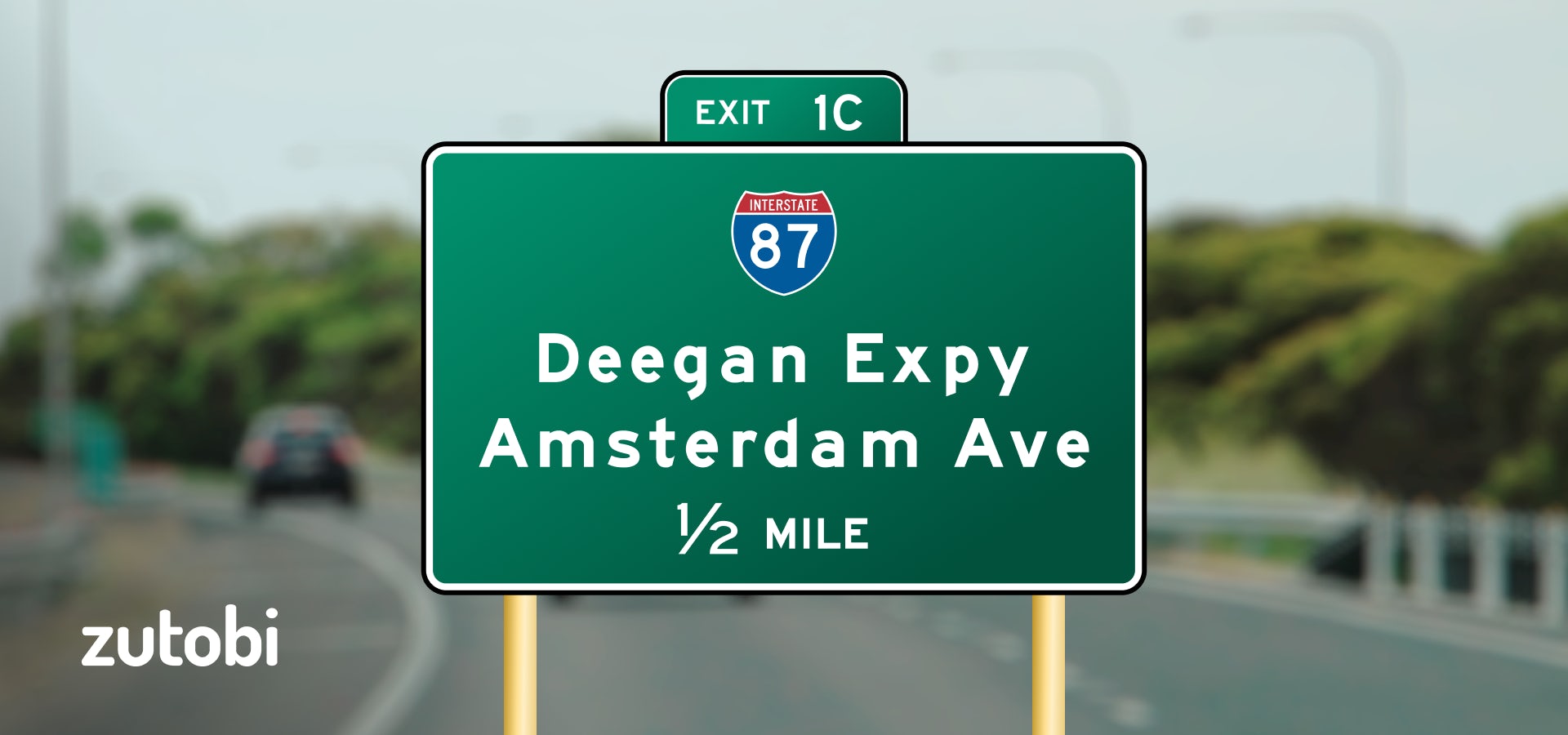
Guide signs typically feature white lettering on a green background. Green signifies guidance, and the white lettering ensures visibility. These signs indicate the location of highways, interstates, and major roads, helping drivers stay on track.
Motorist Service Signs
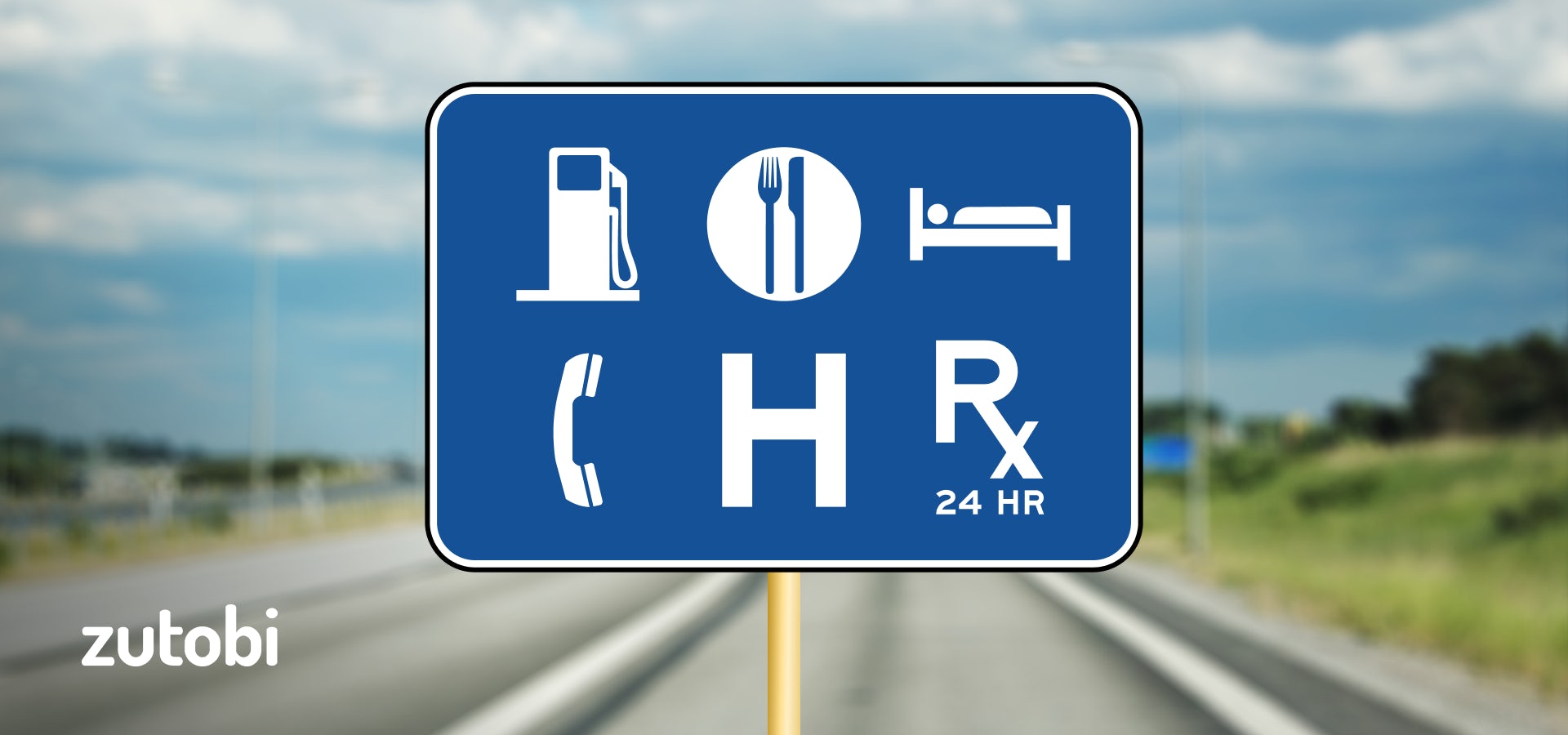
These signs use blue backgrounds with white lettering. They provide valuable information about nearby facilities such as rest areas, gas stations, and food options. Motorist Service signs are crucial for ensuring convenience during long journeys.
Recreational Point Signs
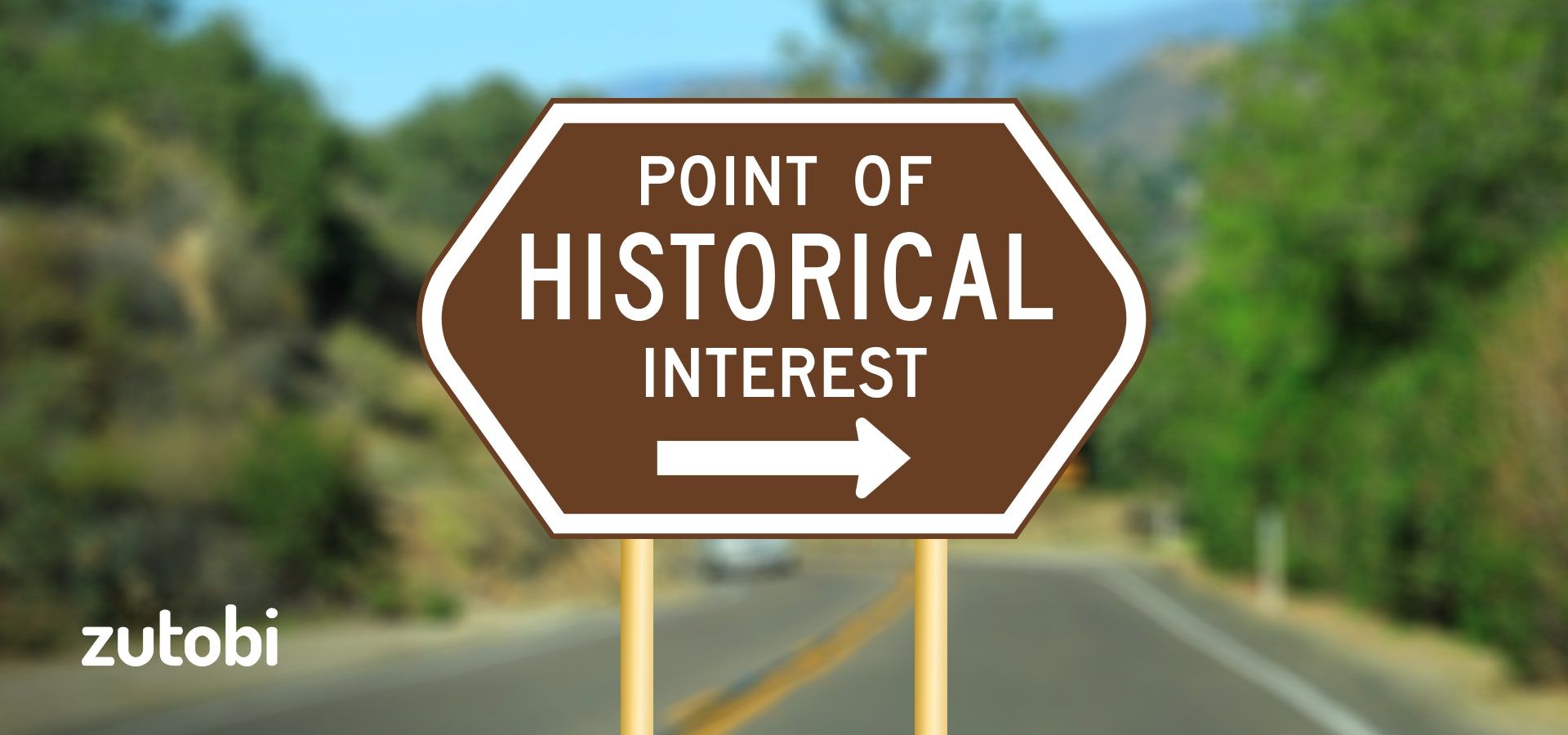
Recreational point signs feature brown backgrounds with white lettering. They highlight recreational areas such as parks, campgrounds, and historical sites. Recognizing these signs helps motorists locate points of interest and make the most of their travel experience.
Master Road Signs for Your Driving Test
Preparing for your DMV driving test? Try Zutobi today. We transform complex road sign theory into engaging, easy-to-remember lessons and offer comprehensive courses to boost your confidence behind the wheel. Our Behind-the-Wheel (BTW) online course provides professional online driving lessons, step-by-step guides, parent training resources for at-home practice, and virtual driving simulations – all in a risk-free environment. It’s used by driving schools in their classroom education and by students alike.
Plus, our permit test prep course is used by over 250,000 students each month and equips you with everything you need to ace your DMV exam on the first try. Take the next step towards getting your license.
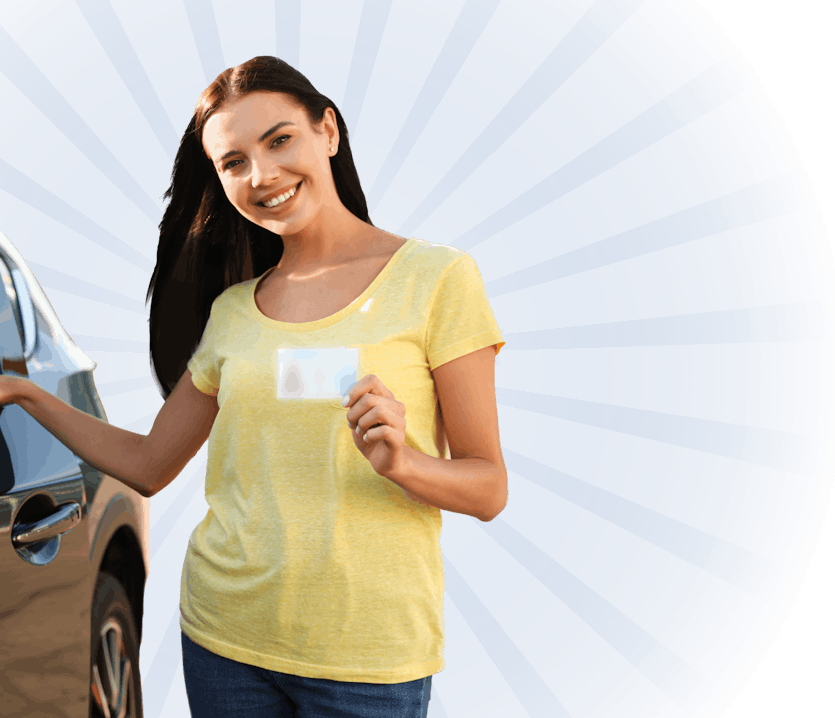
550+ exam-like questions
All you need to ace your test
Perfect for first-timers, renewals and senior citizens
Recommended articles
Ace your DMV test, guaranteed
Want to Be the Top School in Your Area?
- Simple & automated admin
- More time for teaching
- #1 learning materials for students


